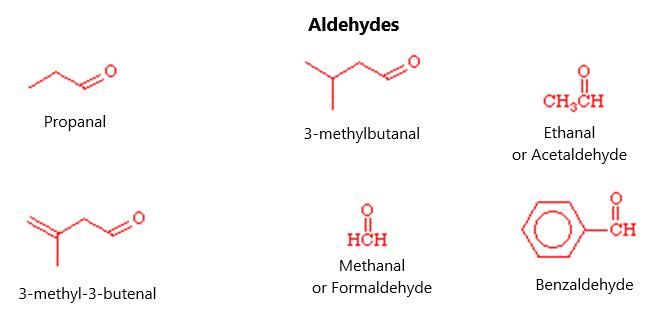There are also complex aldehydes and ketones in hormonal structures seen in animals. These include hormones like testosterone, progesterone, and cortisone—all complex ketone structures.
CARBOXYLIC ACIDS The carboxylic acid has a carbonyl group and a hydroxyl group together, making a COOH functional group. This leads to increased activity compared to aldehydes and ketones. Because of this reactivity, it is considered a distinct functional group. The parent chain remains the same but the ending becomes “anoic acid”. The carboxylic acid group is always at the end of the chain, leading to this being the number one carbon atom. Similar to aldehydes, the carbon atoms are considered not by numbers but by the alpha, beta, gamma system set up by the Greeks. There are many common names of carboxylic acids that you should memorize. This includes the following: •
Formic acid—this goes by the IUPAC name of methanoic acid
•
Acetic acid—this has the IUPAC name of ethanoic acid and comes from vinegar
•
Propionic acid—this has the IUPAC name of propanoic acid and comes from milk
•
Butyric acid—this has the IUPAC name of butanoic acid and comes from butter
•
Valeric acid—this has the IUPAC name of pentanoic acid and comes from valerian root
•
Caproic acid—this has the IUPAC name of hexanoic acid and comes from goats
•
Enanthic acid—this has the IUPAC name of heptanoic acid
•
Caprylic acid—this has the IUPAC name of octanoic acid
•
Pelargonic acid—this has the IUPAC name of nonanoic acid
•
Capric acid—this has the IUPAC name of decanoic acid and comes from goats
85




























































